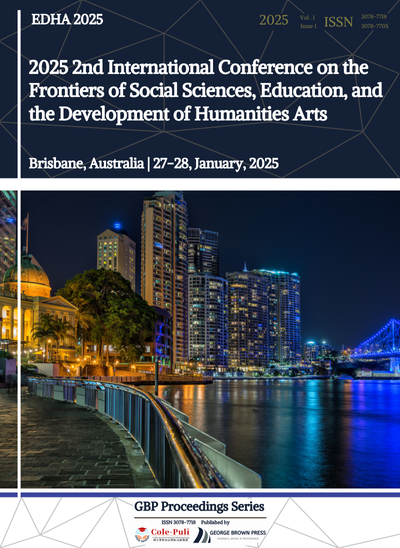Research on Low-Power Wireless Communication Protocols in IoT Environment
DOI:
https://doi.org/10.71222/6x61p960Keywords:
Internet of Things, low power consumption, wireless communication protocols, energy consumption optimization, network topologyAbstract
The growth of the Internet of Things (IoT) has opened up unprecedented opportunities across a wide range of industries; however, as the number of connected devices proliferates, the problem of energy consumption is becoming increasingly acute. Low-power wireless communication protocols are particularly important in this context, as they can not only significantly extend the battery life of devices, but also reduce maintenance costs and improve overall system reliability. This paper provides an in-depth look at the application of Bluetooth Low Energy (BLE), Zigbee, LoRaWAN, and other low-power technologies in IoT environments, and analyzes the design principles and optimization methods of these protocols. Through these studies, we hope to provide readers with a comprehensive perspective and a deep understanding of the central position and future trends of low-power wireless communication protocols in modern IoT systems.
References
1. S. Al-Sarawi, M. Anbar, K. Alieyan, et al., "Internet of Things (IoT) communication protocols," in Proc. 2017 8th Int. Conf. Inf. Technol. (ICIT), 2017, pp. 685-690, doi: 10.1109/ICITECH.2017.8079928.
2. M. Mahmoud and A. Mohamad, "A study of efficient power consumption wireless communication techniques/modules for Internet of Things (IoT) applications," Adv. Internet Things, vol. 6, pp. 19-29, 2016, doi: 10.4236/ait.2016.62002.
3. A. Nikoukar, S. Raza, A. Poole, et al., "Low-power wireless for the Internet of Things: Standards and applications," IEEE Access, vol. 6, pp. 67893-67926, 2018, doi: 10.1109/ACCESS.2018.2879189.
4. K. L. Tsai, Y. L. Huang, F. Y. Leu, et al., "AES-128 based secure low power communication for LoRaWAN IoT environments," IEEE Access, vol. 6, pp. 45325-45334, 2018, doi: 10.1109/ACCESS.2018.2852563.
5. T. Watteyne, X. Vilajosana, B. Kerkez, et al., "OpenWSN: a standards-based low-power wireless development environment," Trans. Emerg. Telecommun. Technol., vol. 23, no. 5, pp. 480-493, 2012, doi: 10.1002/ett.2558.
6. A. Ikpehai, B. Adebisi, K. M. Rabie, et al., "Low-power wide area network technologies for Internet-of-Things: A comparative review," IEEE Internet Things J., vol. 6, no. 2, pp. 2225-2240, 2018, doi: 10.1109/JIOT.2018.2883728.
7. M. A. M. Almuhaya, et al., "A survey on LoRaWAN technology: Recent trends, opportunities, simulation tools and future directions," Electronics, vol. 11, no. 1, p. 164, 2022, doi: 10.3390/electronics11010164.
8. F. Moreno-Cruz, V. Toral-López, A. Escobar-Molero, et al., "treNch: ultra-low power wireless communication protocol for IoT and energy harvesting," Sensors, vol. 20, no. 21, p. 6156, 2020, doi: 10.3390/s20216156.
9. T. Dinh, Y. Kim, T. Gu, et al., "An adaptive low-power listening protocol for wireless sensor networks in noisy environments," IEEE Syst. J., vol. 12, no. 3, pp. 2162-2173, 2017, doi: 10.1109/JSYST.2017.2720781.










